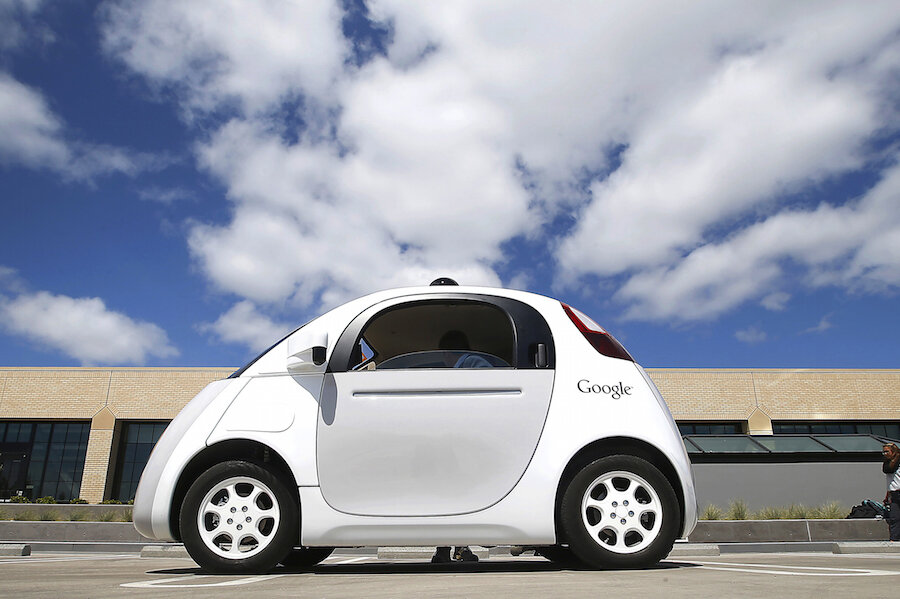Self-driving cars get ready to roll
Loading...
After more than a million miles navigated without human drivers, autonomous-car companies have spotted a new roadblock ahead: state and federal laws. Politicians have been slow to offer a green light to the nascent industry.
Q: Are self-driving cars legal in the United States?
Sort of. So far, four states and the District of Columbia have adopted laws allowing driverless cars on public roads and designed their regulations to allow companies to test the technology in real-world situations, building in strict requirements, such as a common provision that a person be ready to seize the wheel at any moment should something go wrong. Beyond these early adopters, 16 states are considering the issue and nine have shot down autonomous-vehicle bills, according to a tally by Stanford University’s Center for Internet and Society.
As this patchwork develops, Transportation Secretary Anthony Foxx said in January that he plans to unveil federal safety guidelines for self-driving cars in the next six months. In February, the National Highway Traffic Safety Administration took the first step, ruling that a car's "driver" no longer needs to be a human behind the wheel. Software may now legally be considered the driver.
Q: What’s at stake here?
Safety and mobility, for starters. Carmakers say self-driving vehicles will be as much as 10 times as safe as human-driven cars. Google points to statistics showing that 94 percent of all accidents are caused by human error. Unlike people, autonomous cars pay attention at all times. As the technology improves, self-driving vehicles could also redefine public transit through car-sharing plans, automated buses, and lower-cost taxis.
Of course, the technology could also be deployed before it’s ready, causing more accidents instead of fewer, and raising many new liability questions. Or, if the industry rolls ahead without a hitch, it could lead to massive layoffs for drivers across several industries.
Q: When will the technology be ready?
It’s hard to tell. Some companies, notably Google, say they’ve been hampered by regulatory snarls. But there are also technical challenges. Many self-driving cars use sensors powered by technology called lidar (light detection and ranging), which uses light that bounces off objects to develop a detailed model of an environment. Currently, these sensors have difficulty navigating in fog and rain. Mirrored surfaces can also present a challenge.
Google’s cars use technology that makes decisions based on previous situations it has encountered – just as a person’s driving history can make that person a better driver. Despite having conducted extensive testing on roads in California and Texas, the cars aren’t quite ready for the public, the company admits.
“Our cars today, we think, do a really good job avoiding accidents,” says Chris Urmson, head of Google’s self-driving car project. “They do [this] by being a little oversensitive to the signals out there. [So, the challenge] is, How do they keep that level of paranoia while making [the car] not ... overreact completely.”
Tesla head Elon Musk, who argues that autonomous-car technology could be available in as little as two to three years, has said ironing out regulations will likely tack on an additional year.
Q: Is this an uphill battle for self-driving car proponents?
Not necessarily. Bryant Walker Smith, a law professor at the University of South Carolina who studies the technology, says federal guidelines may help take pressure off states to create their own regulations.
“My key message is, Start from the bottom up rather than the top down,” he says. “What we’ve seen in the last few years is states that say, ‘Oh, we want to do something about that,’ and so they jump immediately to passing a law. The bottom-up approach looks at the technology first.”
In California, Google has been aggressively lobbying the Department of Motor Vehicles to finalize its long-delayed guidelines. When a draft was released in December that sharply limited the company’s ultimate goal to make cars without pedals or a steering wheel, the company balked, saying the guidelines put “a ceiling on the potential for fully self-driving cars.” So Google has focused on tests in Texas, where the embrace from lawmakers has been warmer.
Q: Are there autonomous features in regular cars?
Many carmakers already offer features such as automated braking systems that prevent collisions and adaptive cruise control. The US Department of Transportation has also given its blessing to some fully autonomous features, saying BMW’s remote self-parking system meets federal safety guidelines. That said, Tesla recently scaled back its automated steering feature after customers complained about their cars behaving erratically. A recent survey by insurer The Hartford found that many of the light-touch automated features, such as rear backup cameras or sensor-driven smart headlights, proved popular with baby boomers – a key market that Google hopes to court with its cars. However, these older drivers were skeptical of more automated features, such as parking assistance.







